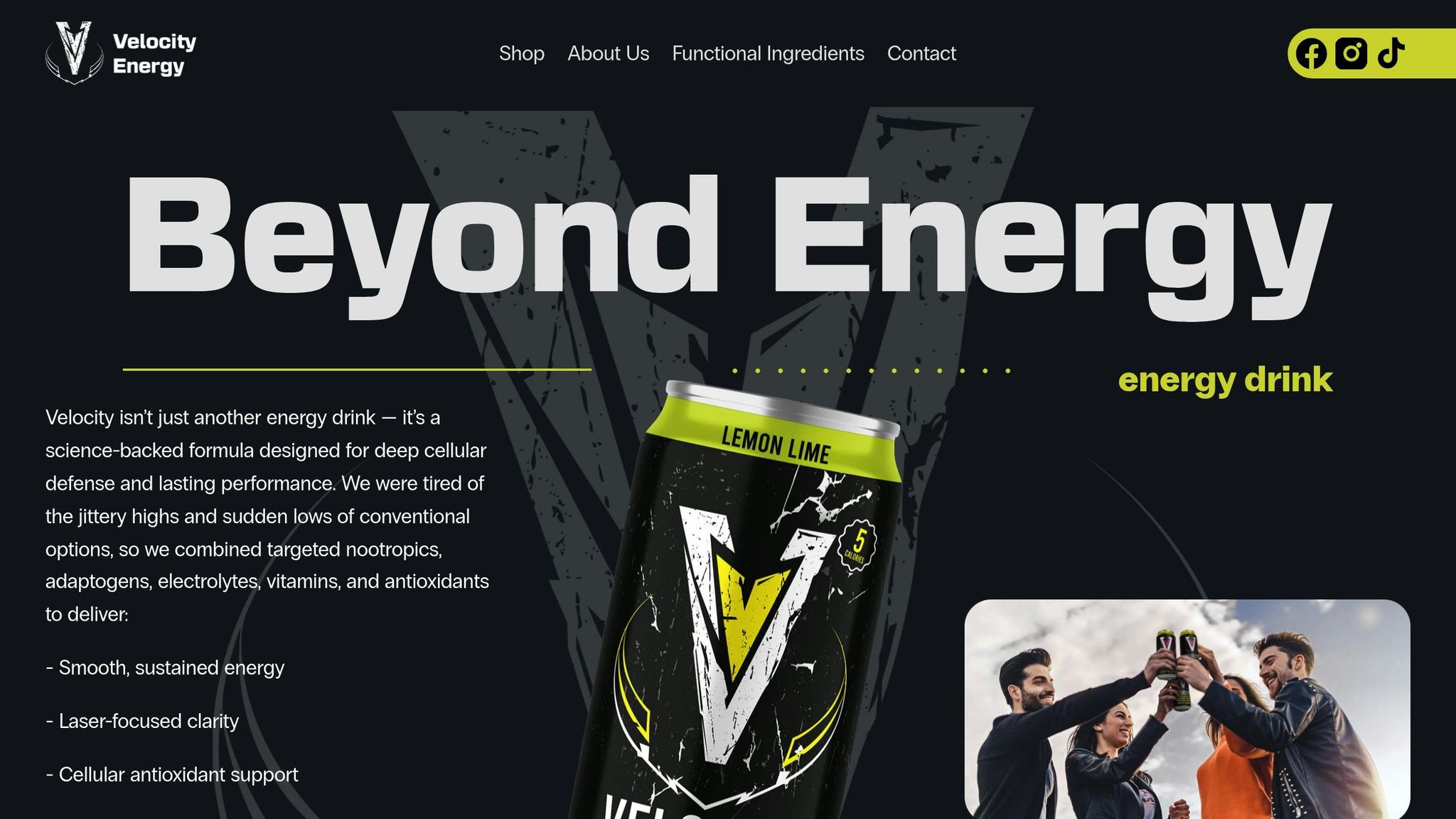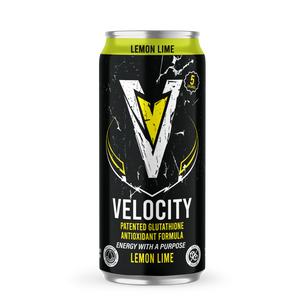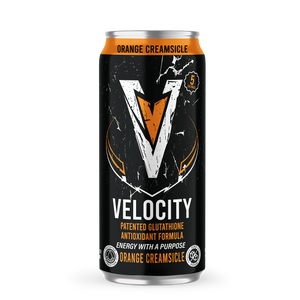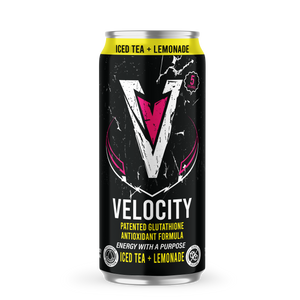Energy drinks are under the microscope, and consumers are demanding answers. Transparency about ingredients is no longer optional - it’s a priority for health-conscious buyers. Here's why it matters:
- Health Risks: Emergency room visits tied to energy drinks rose tenfold between 2005 and 2011. Many brands fail to disclose accurate caffeine levels, with 40% omitting precise amounts.
- Consumer Trust: 73% of shoppers are willing to pay more for products with clear, honest ingredient lists. Transparency builds loyalty and influences buying decisions.
- Ethical Concerns: Beyond ingredients, buyers want details on sourcing, supply chains, and labor practices. Nearly 88% of students believe companies have a moral obligation to be transparent.
The energy drink industry faces challenges like inconsistent labeling laws and past controversies. Brands that go beyond legal requirements - by listing all ingredients, disclosing caffeine content, and using clear labels - can stand out in this competitive market. Transparency isn’t just good practice; it’s what today’s consumers expect.
How Ingredient Transparency Affects Consumer Trust
Research has shown that clear and honest labeling directly influences consumer trust and purchasing decisions in measurable ways.
Consumer Behavior Studies on Transparency
Studies reveal that 73% of consumers are willing to pay more for products with transparent and trusted ingredients, with 52% ready to spend over 10% extra and 44% of American consumers willing to pay 75% or more extra for products featuring recognizable, trustworthy ingredients. This trend highlights a shift in consumer priorities, where ingredient transparency plays a central role.
Ingredient recognition is now a key factor in purchasing decisions, with 52% of consumers identifying it as important. This preference is particularly evident in the energy drink market, where 41% of German consumers are willing to pay extra for drinks made with natural energy boosters.
However, there’s still a gap in ingredient transparency within the energy drink industry. Research indicates that 25% of respondents are unfamiliar with the ingredients in energy drinks, and 16% believe labels should include ingredient origins [13]. For potential energy drink users, 31% say more natural flavors would encourage them to consume these products, while 28% want recognizable ingredients, and 21% are interested in organic options.
Steven Kessler, cofounder of Steaz, emphasizes the importance of transparency:
"First of all, it shows transparency to the consumer. Secondly, if levels of ingredients like caffeine are reasonable, it proves responsibility to the consumer. Lastly, an informed consumer is a more loyal, trusting consumer"
The clean label movement has added momentum to this trend. More than three-quarters of consumers find products appealing when labeled as 'natural, containing only real ingredients, synthetic-free, and free from artificial additives.' Additionally, 74% believe it’s important for groceries to be 100% natural. These preferences not only drive immediate sales but also create a foundation for long-term consumer trust and loyalty.
Building Long-Term Brand Loyalty
The financial benefits of transparency extend beyond one-time purchases, offering brands an opportunity to build lasting loyalty. Transparency allows consumers to make informed choices that align with their dietary needs, health goals, and personal values, fostering deeper connections with brands.
Brands like Suja Juice and GT's Kombucha demonstrate how sharing detailed ingredient and sourcing information can establish trust and encourage repeat purchases.
The energy drink industry, however, faces unique challenges. Past controversies and regulatory scrutiny have pushed many companies to adopt stricter transparency practices. Many well-known energy drink brands now emphasize full disclosure of their ingredient lists. This shift has been driven by both consumer demand and regulatory pressures.
The stakes for maintaining consumer trust are high. Short-term marketing strategies that sacrifice transparency can lead to long-term damage. As Hannah VanWagner from Kogod School of Business explains:
"As public awareness grows and consumer expectations of corporate responsibility strengthen, energy drink companies stand at a crossroads: embrace transparent labeling and ethical marketing or risk significant legal and reputational damage"
The numbers back this up: 58% of US consumers report paying 'very high' or 'high' attention to the ingredients in their food and drinks. For energy drink brands, transparency isn’t just a trend - it’s critical for earning trust and achieving sustainable success.
Regulatory Requirements and Ethical Considerations
The rules around energy drink labeling are strict, aiming to ensure ingredient transparency and protect consumers. These regulations not only safeguard public health but also help build trust between manufacturers and their customers.
FDA Guidelines and Transparency Standards
The FDA oversees energy drinks through two separate regulatory pathways, each with its own set of transparency rules. Products classified as conventional foods must comply with the Federal Food, Drug, and Cosmetic Act (FFDCA), while those marketed as dietary supplements follow the Dietary Supplement Health and Education Act (DSHEA).
For conventional foods, manufacturers are required to list GRAS (Generally Recognized as Safe) ingredients, provide nutritional details, and include health warnings, such as the exact caffeine content. The FDA advises a daily caffeine intake limit of 400 mg, and this must be clearly noted.
Beyond the FDA's baseline requirements, the American Beverage Association has introduced voluntary guidelines that encourage even greater transparency. These include prominently displaying caffeine amounts per serving or container, separate from the nutrition facts label, and adding warnings for groups like children, pregnant women, or those sensitive to caffeine. These voluntary measures are shaping the future of industry practices.
A notable example of regulatory adaptation is Monster Beverage Corporation's 2013 decision to reclassify its energy drinks from dietary supplements to conventional foods. This shift included adding precise caffeine labeling, reflecting a broader commitment to consumer safety.
The stakes are high. The FDA has acknowledged the challenge of keeping up with the "current proliferation of caffeinated products" With energy drinks generating $159 billion in revenue in 2021, the demand for clear and consistent regulations is more pressing than ever.
Ethical Problems with Unclear Ingredient Labeling
The ethical issues tied to poor ingredient transparency go beyond mere compliance - they touch directly on consumer trust and safety. Unfortunately, significant gaps in current industry practices put many consumers at risk.
Studies reveal that 40% of popular energy drinks fail to provide quantitative caffeine information, and 30% of those that do underreport caffeine levels by over 20%. This lack of accuracy raises serious ethical concerns.
As researchers Reissig, Strain, and Griffiths highlight:
"It is a striking inconsistency that, in the United States an over the counter (OTC) stimulant medication containing 100 mg of caffeine per tablet (e.g., NoDoz) must include all the above warnings, whereas a 500 mg energy drink can be marketed with no such warnings and no information on caffeine dose amount in the product"
This inconsistency underscores the ethical responsibility of manufacturers to exceed minimum requirements. The Federal Trade Commission (FTC) reinforces this point, stating that:
"Advertising must be truthful and not misleading; and Before disseminating an ad, advertisers must have adequate substantiation for all objective product claims conveyed, expressly or by implication, to consumers acting reasonably."
The need for transparency becomes even more critical when considering vulnerable groups. For instance, 8% of young children and up to 4% of adults have food and drink allergies, making accurate ingredient labeling a matter of life and death. Incomplete or unclear labels can pose serious health risks for these individuals.
To address these concerns, responsible manufacturers adopt practices that go beyond regulatory mandates. These include:
- Clearly disclosing total caffeine content from all sources.
- Adding advisory statements for sensitive populations.
- Ensuring labels are easy to read, prominently placed, and include comprehensive allergen and ingredient information.
These measures are essential for maintaining consumer trust in a competitive and fast-evolving market. Transparent ingredient labeling isn't just about avoiding harm - it's about empowering consumers to make informed choices about products that can have a significant impact on their health. This balance of regulatory and ethical considerations sets the stage for the best practices in ingredient transparency discussed in the next section.
sbb-itb-b96d45f
How to Implement Ingredient Transparency: Best Practices for Brands
Ingredient transparency is more than just meeting basic regulations - it's about building trust. Energy drink brands that focus on clear communication and ethical practices not only strengthen their relationships with customers but also position themselves for long-term success in a crowded market. Transparent labeling plays a key role in this, setting the stage for honest sourcing and credible claims.
Clear and Accessible Labeling
The foundation of ingredient transparency lies in clear and detailed labeling. Energy drink labels should go beyond legal requirements, providing a full list of ingredients, a comprehensive Nutrition Facts panel, and clear allergen declarations. The American Beverage Association also advises including extra information to avoid legal issues and build consumer trust.
Some key labeling elements include:
- Suggested serving sizes
- Clear caffeine content disclosure
- Warnings such as: “Not intended or recommended for children, pregnant or breastfeeding women, or those sensitive to caffeine”
The design of the label is just as important. It should effectively communicate the product's value while meeting mandatory requirements [22]. Using brand-aligned colors and readable fonts helps ensure the label reflects the brand’s tone and personality.
To implement this effectively:
- List every ingredient clearly, especially stimulants like caffeine.
- Use a hierarchy of information to ensure important details stand out.
- Test label designs to catch errors and maximize both marketing appeal and transparency [22].
Transparency in Sourcing and Claims
Ingredient transparency doesn’t stop at the label. Transparent sourcing builds trust by showing customers exactly where ingredients come from and how they’re processed. With only 38% of U.S. consumers trusting food labels, brands must back up their claims with real actions.
Supply chain transparency starts with strong partnerships. Brands need to work closely with farmers, growers, and suppliers to ensure a reliable flow of high-quality ingredients. This includes verifying where ingredients come from, maintaining rigorous quality checks, and conducting audits to uphold integrity.
Consumers are increasingly drawn to "clean labels." In fact, 66% of shoppers are willing to pay more for products made with sustainable, natural, or organic ingredients that align with social values. Emma Schofield, a Senior Analyst at Mintel, highlights this trend:
"Consumers create their own definition of what 'clean' means to them. The word 'clean' is scarce on food and drink labels. Instead, consumers look for attributes and claims that they link to 'clean label' or 'clean eating', such as organic, natural, and increasingly, claims relating to a brand's 'clean conscience'."
Manufacturing practices should also reflect transparency. Techniques like cold-pressing and fermentation help preserve the nutritional value of ingredients. Sustainable packaging can further demonstrate a brand’s commitment to responsible practices.
Third-party certifications add another layer of credibility. Independent audits and certifications, such as USDA organic labels, validate clean-label claims. This ensures that ingredients are either naturally sourced or meet GRAS (generally recognized as safe) standards [24]. As Jackson Zapp, vice president of innovation at AFS, explains:
"Because the term 'all natural' is under a lot of scrutiny, even our customers with non-organic product offerings are seeking to formulate with our USDA-certified organic ingredients"
The benefits of such transparency are clear. Studies show that 68% of consumers pay attention to ingredient content, and 78% find clean labels appealing when a definition is provided. Additionally, three in five consumers want to know more about where their food comes from and how it’s made. For one in six, the quality of ingredients is a deciding factor in purchase decisions.
To meet these expectations, brands should focus on clear and honest ingredient lists, avoiding vague terms like "proprietary blend". Highlighting ethical sourcing, organic certifications, and sustainable practices, while clearly communicating "free from" claims, creates a solid foundation for trust. In the competitive energy drink market, this approach can help brands stand out and build lasting loyalty.
Case Study: Velocity Energy and Science-Backed Transparency

Velocity Energy takes the idea of ingredient transparency to heart, showcasing it through a science-driven approach. At the core of their philosophy is a commitment to "clean fuel only", making transparency a key part of their product identity.
One standout ingredient in their formula is glutathione, often called the "master antioxidant." This compound plays a vital role in detoxifying cells and recycling other antioxidants. For adults, the recommended dose falls between 250–500 mg daily, a range supported by scientific research.
The brand’s "no crash zone" promise directly tackles a common complaint about energy drinks: the dreaded energy spike followed by a crash. Instead of loading up on sugar and synthetic caffeine, Velocity Energy uses B vitamins to support energy metabolism and improve cognitive function - delivering sustained energy without the crash.
Their tagline, "energy with purpose" , reflects a broader mission: ensuring every ingredient serves a clear, health-supporting role. This approach aligns with what consumers are increasingly seeking - simple, transparent ingredient lists. In fact, nearly three-quarters of shoppers reconsider their purchases based on what they see on product labels.
Conclusion: The Value of Transparency for Consumers and Brands
Ingredient transparency in energy drinks benefits both consumers and brands. Over 90% of consumers consider transparency a key factor in their purchase decisions, and 94% are more likely to stay loyal to brands that prioritize full transparency.
Clear labeling offers more than just ethical and regulatory compliance - it directly helps consumers, particularly those with allergies or specific health concerns, make safe and informed choices. Financially, transparency pays off too. Around 73% of consumers are willing to spend more on products with transparent labeling. This approach not only drives initial sales but also fosters long-term customer loyalty. By fully disclosing ingredients, brands demonstrate accountability and a commitment to quality. With 29% of consumers in the U.S. and Canada actively reading labels, transparent brands gain a competitive edge in the marketplace[4].
Consumers are increasingly interested in knowing the origins of ingredients, how they are sourced, and whether they meet quality and sustainability standards. Energy drink brands that embrace this demand by being upfront about their ingredient lists position themselves for lasting success.
Ultimately, ingredient transparency shifts the energy drink industry from relying on marketing hype to empowering consumers with informed choices. By being clear and honest about what goes into their products, brands build the trust and loyalty needed for sustainable growth. Science-backed transparency not only supports consumer health but also strengthens the foundation for long-term brand success.
FAQs
Why is transparency about ingredients important for energy drinks?
Transparency about what's in energy drinks matters because it empowers consumers to make better choices for their health. With more people becoming cautious about hidden or vague ingredients, there's a growing demand to know exactly what goes into these products. Clear labeling not only provides peace of mind but also shows consumers that the brand prioritizes their well-being and aligns with their health-conscious goals.
It also plays a big role in building brand loyalty. These days, many shoppers are on the lookout for products that are backed by science and made with natural, high-quality ingredients. When energy drink companies are open about their formulations, it sends a strong message: they care about safety, quality, and following industry regulations. In a market where trust is everything, being transparent can set a brand apart.
How do regulations ensure transparency in energy drink ingredient labeling?
Regulations are essential for ensuring consumers know exactly what's in their energy drinks. In the United States, the FDA requires manufacturers to provide clear and detailed labels. These labels must include a full list of ingredients, any allergen information (if applicable), and a complete Nutrition Facts panel. This level of detail empowers consumers to make informed choices about what they consume.
Moreover, every ingredient must either be classified as Generally Recognized As Safe (GRAS) or pass safety evaluations to meet strict regulatory standards. These measures not only keep consumers informed but also help establish trust by guaranteeing the safety and transparency of the product's ingredients.
How can energy drink brands build trust by being transparent about their ingredients?
Energy drink companies can earn consumer trust by being transparent and straightforward about what goes into their products. This means offering clear, detailed ingredient lists that are easy to understand, as well as explaining how each ingredient contributes to health and performance. Ensuring these ingredients meet safety and quality standards, in line with FDA regulations, is a critical part of this approach.
Beyond ingredients, sharing insights into sourcing and production processes can deepen trust. People want to know where the components of their drinks come from and how they’re made. By focusing on openness and clarity, brands can build stronger connections with their audience and cater to the increasing preference for clean, functional beverage options.




